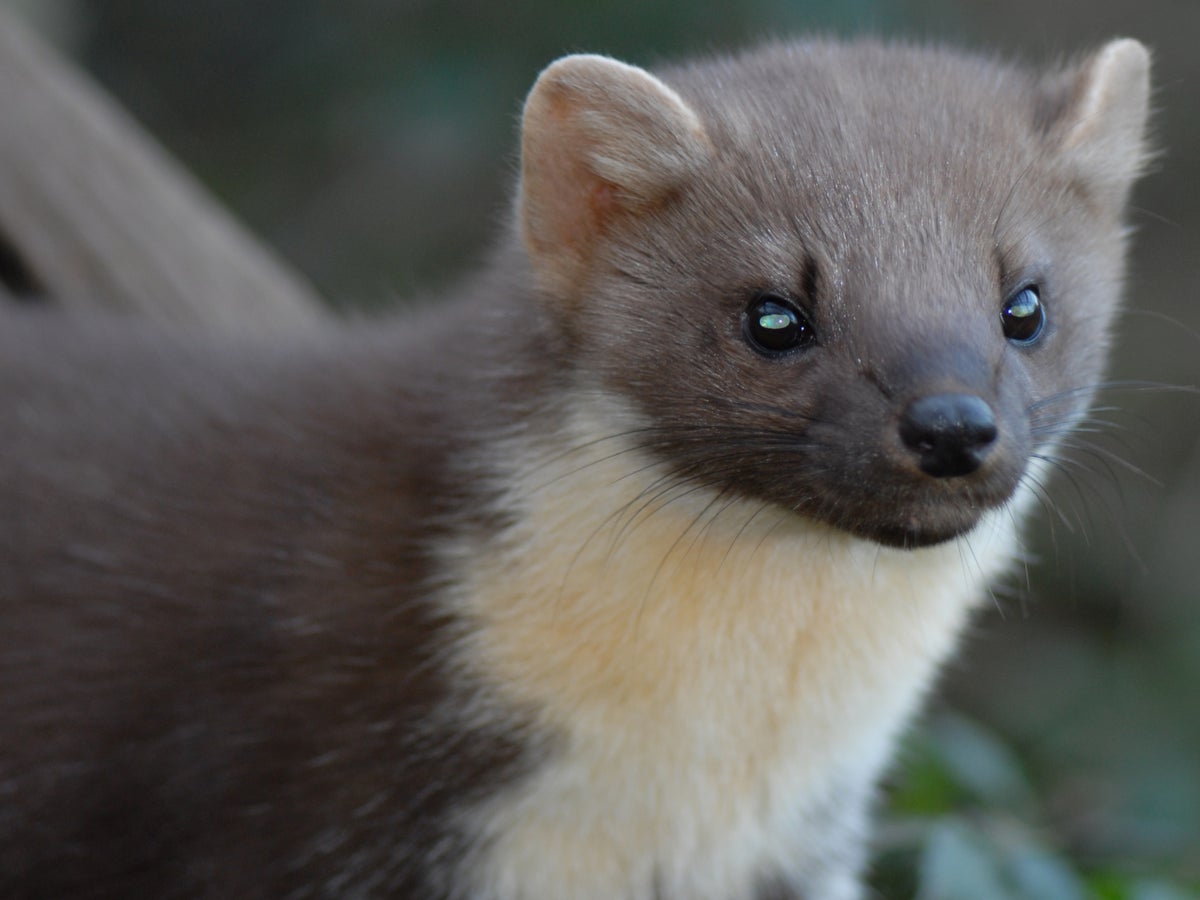
Conservationists are celebrating what they say is the return of pine martens from the brink of extinction in southern England.
The animals, an elusive member of the weasel family, were once widespread across the UK before habitat loss and persecution by gamekeepers left only small and fragmented populations, mostly in northern England, Scotland and parts of Wales.
But now video clips have shown the presence of kits and young pine martens across the New Forest in Hampshire, showing the creatures are breeding.
Ecologists want to work out the size of the population— (Forestry England)
In a three-year study, 30 hidden cameras were placed in 11 parts of the New Forest after visitors reported spotted pine martens, which are nocturnal cat-sized animals.
England’s first reintroduction of pine martens began in 2019 in the Forest of Dean, Gloucestershire, as part of nature-recovery schemes returning lost species of wildlife to forests.
Work is also aiming to bring back pine martens in Kielder Forest, Northumberland, and Grizedale Forest in the Lake District.
By analysing over 1,000 hours of footage from hidden cameras and thermal imaging surveys, experts have confirmed that pine martens have settled right across the New Forest, saying the ancient woodlands provide an ideal habitat.
Marcus Ward, from specialist conservation consultancy Wild New Forest, said: “Pine martens are incredibly rare and very difficult to spot, making it difficult to study them.
“The footage collected by the cameras has given us a really unique view into their hidden world and will really help advance our understanding of these special creatures and how best to support them.”
Leanne Sargeant, senior ecologist for Forestry England, said: “The nation’s forests provide such important areas for wildlife to thrive and expand and the New Forest is doing just that for these special creatures. Now we know they are here and breeding, our next step is to try and estimate the size the population and how they are using the New Forest’s ancient woodlands.”
Over the next few years, the team hope to track family groups.







